
Artists that have drawn for many years often amaze people by how quickly they can get an image on the drawing surface. Often, what’s equally amazing is the accuracy that accompanies the speed. Unfortunately, when people see this skill, they assume that it is the result of talent, instead of developed skill.
Frankly, anyone can draw quickly, but drawing speed without accuracy really misses the whole point. So, we need to draw quickly, but also draw with accuracy.
The truth is that knowing a few “secrets” will help to improve your drawing skill and ironically, improve your accuracy as well. These concepts will require practice, but if you keep them in mind while you draw, you will see noticeable improvement in your speed.
Many people first approach drawing by drawing contour lines, or the outlines of the object. In fact, this approach to drawing seems almost instinctual. We’ve been drawing with line ever since we first held a pencil in our hands. This approach, while worthwhile and important, is slow and tedious. Every subtle change in the direction of line has to be recorded with accuracy. This makes the drawing process painfully slow. If we think of objects in terms of shapes, the drawing process is made simpler, leading to quicker and more accurate drawings.
Every object can be broken down visually into simple shapes. By piecing these simple shapes together, even complex objects can be constructed rather quickly. Take for example this spay bottle. (I know - an exciting subject right?) While the bottle is not overly complex, it does feature a few shapes that may pose a challenge. We’ll simply break the bottle down into easy segments (or shapes).
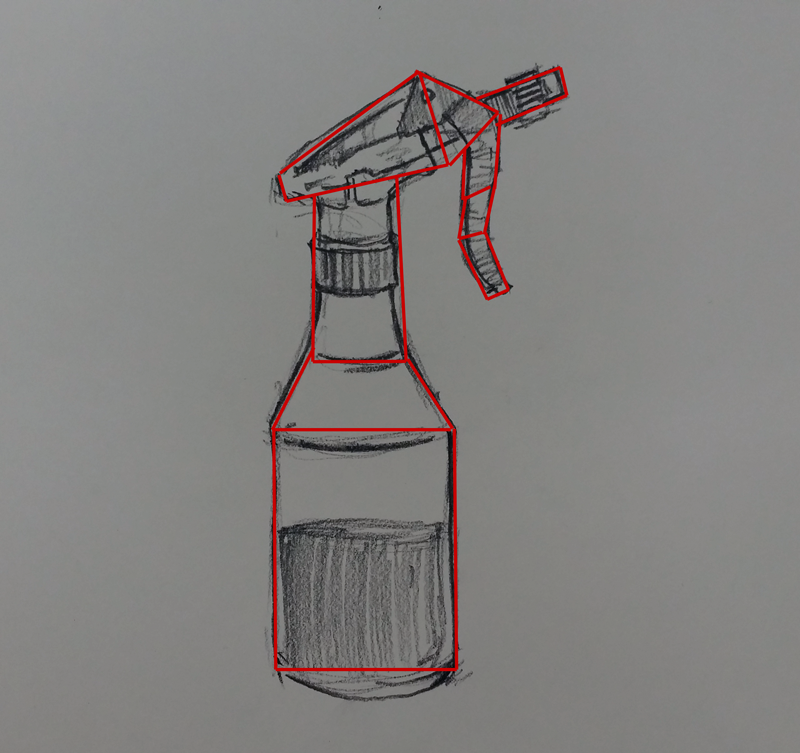
The tricky part is learning how to see the simple shapes in complex objects. Noticing shapes in complex objects can be learned through practice. This is the focus of the website, sketchbooknation.com.
Another technique for improving your drawing speed is to make comparisons and evaluations of spacial relationships that exist within the picture plane. It’s easy to make these comparisons if you are working from a photo reference that is already cropped to match the composition of your drawing. If you are working from life, it’s much harder to see these relationships. Using a viewfinder helps to make the necessary comparisons, but without one it’s nearly impossible.
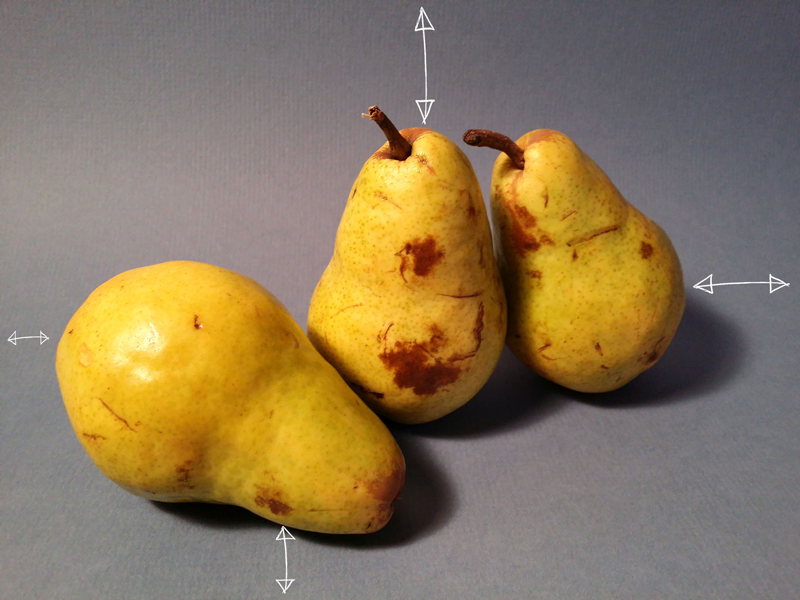
This technique is mostly helpful for the initial layout of your composition. The trick is to notice the negative spaces between the positive spaces and try to match them to the reference. If you can get the information correct, then laying out your composition with your initial marks can be accomplished quickly and accurately.
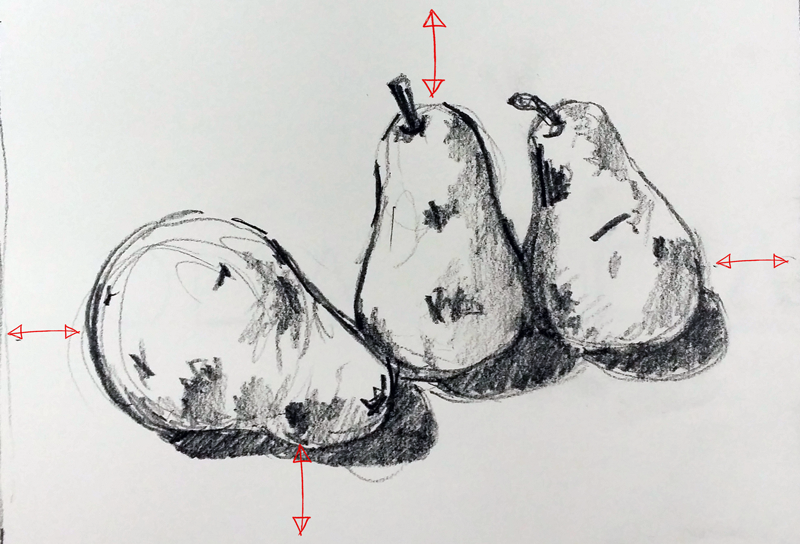
Another technique for increasing drawing speed deals with the physical manner in which marks are made on the surface. It is a natural tendency to draw as we write. We have learned how to hold a pencil to write, so it’s a natural urge to draw as we write.
When we write, we use mostly our wrists and fingers. Working with this muscle group gives us the control to make clear marks that are necessary for writing letters. The good news is that for drawing, we can be loose and less defined with our marks.

So, it only makes sense to use a larger muscle group when we make marks. In fact, we can hold the pencil differently too. If we draw from our shoulders instead of our wrists, we can be loose with our marks. We can make varied intensities of line using a larger muscle group. Looser marks in drawing are not just quicker to apply, but they also create a sense of movement and interest in the drawing. Accuracy is also improved by drawing several lines for the subject instead of just one.
If drawing faster is priority, then be sure to use a medium that is suited for speed.
For example, a colored pencil drawing will take more time to complete than a pastel drawing of the same size. The nature of the medium obviously plays a role in the speed in which the drawing can be completed. Colored pencils are sharpened to a point meaning that covering a large area will take quite a bit of time. Pastels, however can be spread quickly. Granted, there is a trade off. Colored pencil drawings can be developed to a greater level of detail than a pastel drawing.
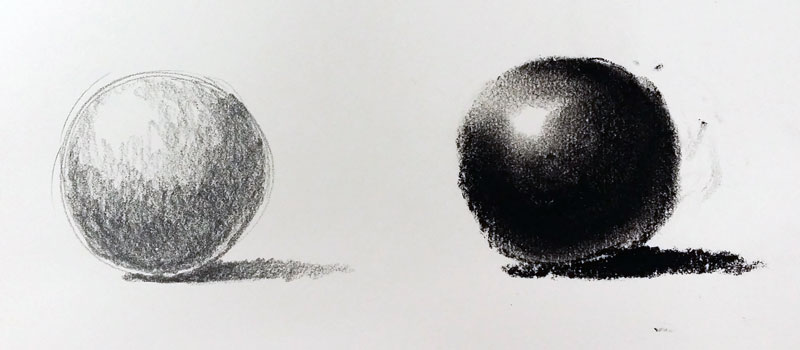
This is another reason why charcoal is a popular medium for figure drawing from life. Information can be drawn on the surface quickly. Values and light can be developed in a short amount of time. Complete drawings can be developed faster using charcoal.
All of the details that are observed do not have to be recorded, especially if speed is of importance. Often, parts of a image are more aesthetically successful when they are simplified into values, lines, and shapes.
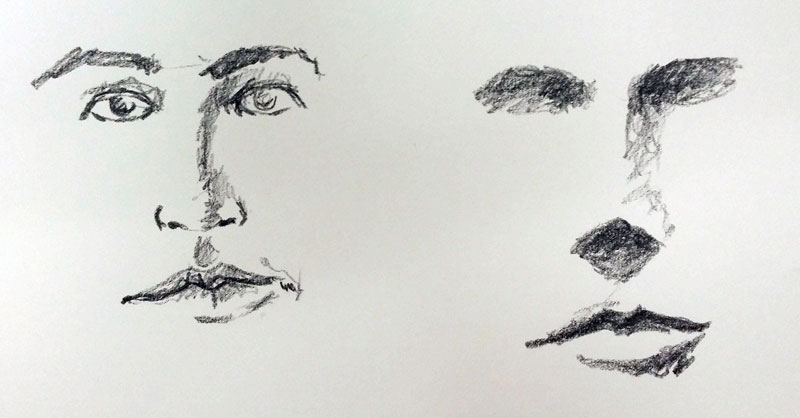
Getting caught up on the details can slow you down, especially when work becomes stalled because of perceived mistakes. If you become too obsessed with details, the drawing may look stiff or unnatural when its complete - if it ever gets completed at all.
Drawing faster simply takes knowledge and practice. Speed comes by practicing drawing with shapes, recognizing spacial relationships, drawing with a larger muscle group, using the right medium, and omitting unnecessary details.
So start improving your drawing speed (and accuracy) by drawing as many different things using these concepts. You’ll notice your drawing improve.